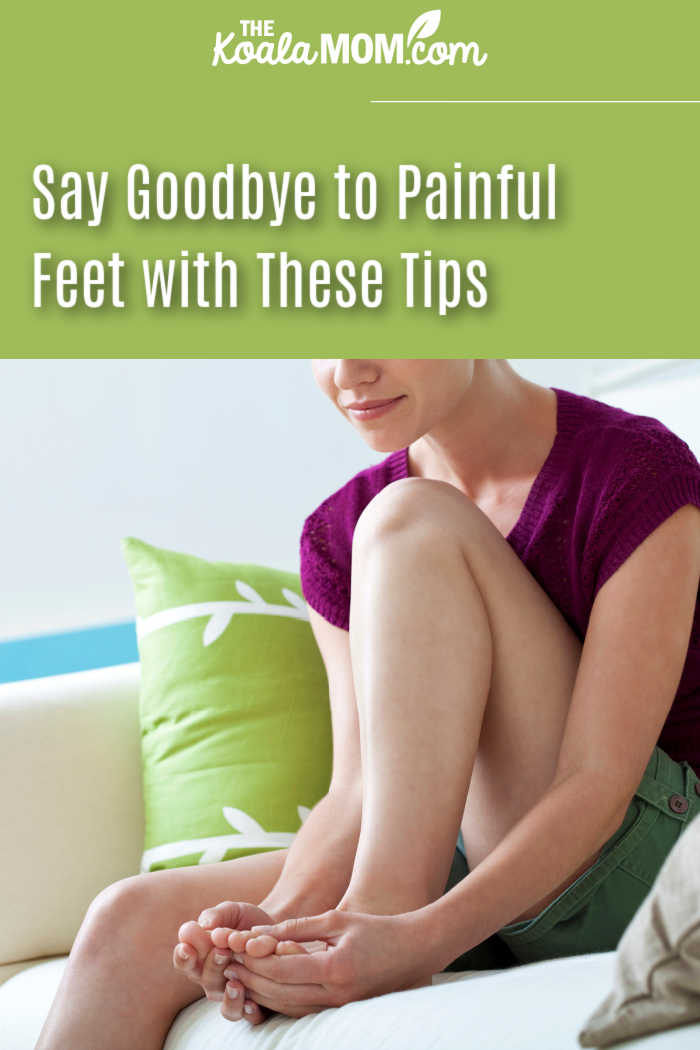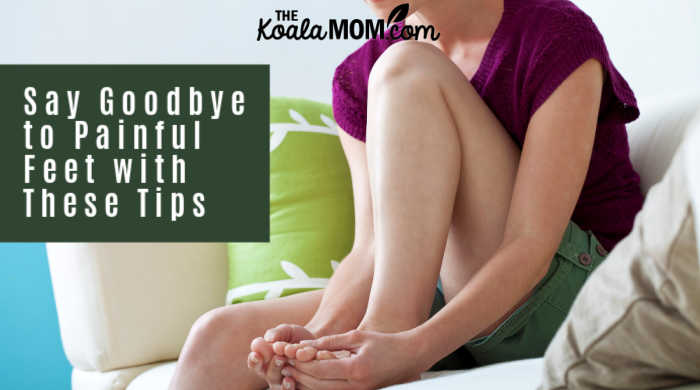As moms, many of us spend long hours on our feet, whether we’re cooking in the kitchen or mopping the floors or just keeping up with the kids. When we’re walking, exercising, or simply standing, our feet are hard at work keeping us in the desired position. Jobs that require moms to constantly be on our feet also put a lot of stress on our lower extremities and could lead to discomfort and painful feet.

While prolonged standing might be necessary for some tasks as moms, you can ease the discomfort by wearing appropriate shoes like crocs nz with good arch support. Putting on soft and thick socks for women can also provide additional cushioning for the balls of your feet. Despite these precautions, however, you may sometimes experience pain in your feet. The challenge is when pain becomes unbearable enough that it makes regular activities too bothersome to do.
If this is something you’ve experienced, you’ll be glad to know that there are different ways to relieve foot pain. Some recommendations focus on foot care, while others are about performing activities to loosen any tightness in the muscles of the leg or foot. To learn more about how you can say goodbye to painful feet, check out these tips.
Choose Shoes that Fit Well
When it comes to having foot pains, you need to observe how your feet feel in the shoes you wear. Do they feel constricted? You might be wearing shoes that are too small so that blood circulation to your feet is cut off, which makes walking or standing uncomfortable. As such, it’s best to get shoes that are properly sized for your feet.
One way to do that is to hold off on your shoe shopping until later in the day, when your feet are naturally larger. Also, pick a pair that’s about half an inch larger to give you enough wiggle room between the shoe and your longest toe. Use the same technique if you plan to add arch support insoles. Buying shoes that are half a size larger ensures your feet won’t feel squished.
Trim Toenails into a Proper Shape
Shoes aren’t the only potential source of discomfort for your feet. Your toenails might be the problem. For example, ingrown toenails can be painful because the edge of your nail puts pressure on the skin as it grows. This can happen when you cut your toenails in a rounded shape so that the sides of the nail grow into the skin. Prevent ingrowns by cutting your nails straight across using clean, sharp nail scissors or clippers.
Keep Yourself Hydrated
Some foot pains aren’t constant; you might experience short but intense aching sensations that feel like a sharp object was driven into your foot. These foot cramps occur when the muscles in the arches of the feet or toes contract and are unable to relax. While foot cramps usually last for a few minutes or even several seconds, the pain can feel deep and debilitating. You might think that you’ve been injured, but the spasm is likely due to dehydration or a dietary imbalance.
When you experience a foot cramp, gently stretch out the affected foot to help relieve the pain. Do this by flexing your foot and pressing down on your big toe. If you want to reduce your chances of getting foot cramps, drink plenty of fluids and include foods that are rich in potassium like bananas or spinach in your diet.
Stretch Whenever You Can
Your calf muscles can become stiff after standing or walking all day. This also puts more stress on the balls of your feet, which contributes to the pain. To keep your feet from hurting, you need to relax and lengthen any tightened muscles. Stretching every hour or so can help to release the stiffness, and the exercises are easy enough to do even when you’re at work.
One stretching activity you can do is calf raises. This exercise helps pump blood out of the foot and back into the heart. Position yourself on a step or platform, and stand with the balls of your feet firmly placed on the step while your heels hang over the edge. Pull your abdominal muscles in, raise your heels a few inches above the step, and stand on your toes. Hold this position for a few seconds before lowering your heels back to be even with the platform. Repeat this stretching exercise 10 times.
In addition to the calf raises, you can also do the runner’s stretch to loosen any tightness in the legs. Face a wall and place both palms against it. Then, extend one leg behind you and push your heel down to the floor as far as you can. Hold this pose until you feel the stretch in your leg, then switch to the other leg. Repeat this three times on each leg.
Take Breaks from Standing
Standing for a long time will definitely cause painful feet. Ideally, you want to have a combination of sitting and standing poses to keep your feet pain-free. However, if your job requires you to stand for long hours, the next best thing to do is take your breaks sitting down.
Cuddle in a big chair with your kids and read a story together, or try to sit down at the kitchen table to do the veggie prep or mixing. This will help relieve pressure from your feet and allow you to feel more relaxed.
Give Your Feet an Ice Bath
Giving your feet proper care when they are tired and feeling achy can help relieve any discomfort. For example, soaking your feet in an ice bath is an effective way to ease foot swelling. The cold temperature constricts the blood vessels in your legs and feet, which can reduce the inflammation caused by standing or walking for extended hours. Simply fill a bucket with water and ice and immerse your feet in it for 20 minutes.
Elevate Your Feet
Another way to decrease the swelling in your feet is by elevating them above the rest of your body. This improves the blood circulation in your legs and feet, which generally have to work extra hard to pump blood back into your heart when you remain upright for long periods. Putting your feet up is literally a great position to help you feel rested and encourage healthy circulation. Prop them up against a wall or on a stack of pillows for 20 minutes a day. If your feet feel extra swollen, keep them elevated for another 10 minutes, or do it more frequently.
During pregnancy, when there is even more weight on your feet due to your growing baby, it’s even more important to take care of your feet. Many women notice that their feet become more swollen during pregnancy, and may experience other foot pain and symptoms. Try some of these tips to alleviate your foot pain.

While you might not be able to avoid activities that put a lot of strain on your feet, there are precautions you can take to ease the discomfort and protect your feet from further abuse. You can also follow the tips above to address the soreness that you feel and help relax your leg muscles. If you continue to have painful feet or it gets worse, it’s best to make an appointment with your podiatrist.
Have you dealt with painful feet? What tips helped relieve your foot pain?
Image credit: Depositphotos.

No Responses Yet